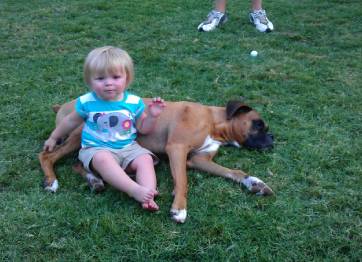Woof! Bark! Grr! It’s no secret that puppies and dogs hold a special place in our hearts, especially for kids. But, have you ever wondered how to ensure a harmonious relationship between your little one and their furry friend? Well, fret not, because we’re here to unleash the secrets of puppy and dog interaction using behavioral science techniques. With a sprinkle of fun and a dash of education, we’ll guide you through the ins and outs of puppy training, dog obedience training, and behavioral curbing, ensuring your child and pup become the best of pals.
The Puppy Training Playground
When kids and puppies first meet, it’s like a match made in furry heaven. However, it’s crucial to start on the right paw. Puppy training is where it all begins, and it’s a fantastic opportunity for your child to bond with their new four-legged buddy.
Getting Started: Building Trust
Begin by teaching your child the importance of trust and consistency. Dogs thrive on routine and predictability, so explain to your little one that they need to be reliable and kind. Make sure your child knows that positive reinforcement, like treats and praise, goes a long way in the world of puppy training.
Joining Puppy Group Classes
Enrolling your puppy in group classes is a fantastic way to kickstart their education and socialization. These classes not only teach your pup essential obedience skills but also allow your child to learn alongside their furry friend. Your kid can take part in these group classes too, fostering teamwork and understanding.
Paws and Playtime
Now that your child and puppy are on their way to becoming a dynamic duo, it’s time to explore the joy of playtime. Play is an essential aspect of behavioral science, helping to reduce aggression and anxiety in dogs while strengthening their bond with kids. The use of busy toys can also help by keeping the dog busy and out of trouble while keeping the child involved and amused.
Play Nice and Safe: Setting Boundaries
Teach your child about setting boundaries during playtime. Encourage them to use toys and engage in activities that are suitable for their pup’s age and size. This not only keeps both the child and the puppy safe but also teaches kids about empathy and consideration.
Tail-Wagging Fun: Private Classes
Consider enrolling in private classes that focus on bonding between your child and their pup. These classes offer personalized attention, allowing your child to learn at their own pace and develop a deeper connection with their furry friend.
Speaking Doggy Language
Dogs communicate primarily through body language and basic vocal cues. Understanding these unspoken signals is the key to building a solid relationship between your child and their puppy.
Learn to talk “dog”! Educate your child on the basics of dog body language. Teach them to recognize signs of excitement, fear, and aggression. This knowledge will help your child respond appropriately and strengthen their bond with their new puppy.
Speak Woof: Vocal Cues
Dogs bark, growl, whimper, and yip for various reasons. Explain to your child that it’s essential to understand what these vocal cues mean. Is their pup barking out of excitement, fear, or a need for attention? Teaching your child to respond accordingly will help their puppy feel understood and loved.
The Magic of Positive Reinforcement
Behavioral science teaches us that positive reinforcement is the key to teaching dogs good manners and reinforcing desirable behaviors. Involving your child in this process can be incredibly rewarding.
Show your child how to use treats and praise effectively to reward their puppy’s good behavior. It’s like a magical trick that turns your pup into an obedient superstar. But remember, moderation is key – too many treats can lead to a pudgy pup and weaker obedience as they will only perform if they know you have a stinky treat 🙂
Training Treasure Hunt: Fun with Commands
Turn obedience training into a game. Have your child hide treats around the house and teach the puppy to go find them. This becomes very mentally stimulating and rewarding for both your child and his furry friend.
Boarding School and Beyond
As your child and their pup grow, there may come a time when additional training or socialization is needed. Consider enrolling your dog in a Boarding School Program for advanced training to ensure a well-rounded and well-behaved furry family member.
Continuing the Journey: Ongoing Classes
Encourage your child to attend ongoing group classes with their dog. This not only keeps their pup’s skills sharp but also provides an excellent opportunity for your child to meet other young dog enthusiasts and exchange tips and tricks.
Final Words
And there you have it – a magical journey through the world of puppy training, dog obedience training, and behavioral science techniques for kids. By following these tips and tricks, your child and their furry companion will create a bond that’s stronger than ever. So, let the tail-wagging adventures begin, and may your home be filled with love, laughter, and lots of puppy kisses!
If you need help with your dog’s obedience or behavioral curbing, or you want to ensure your child and dog coexist in a happy way, contact the skilled dog training experts at K9 University by calling 405-621-5635 or filling out our online contact form.



